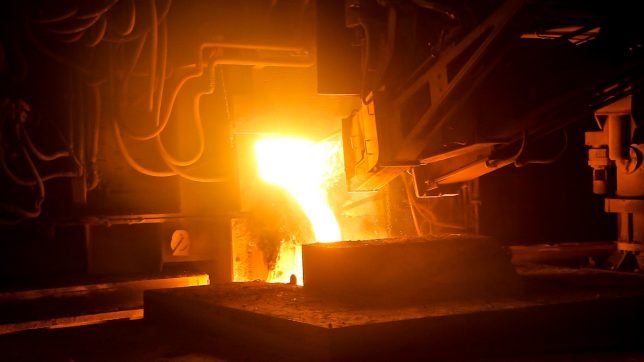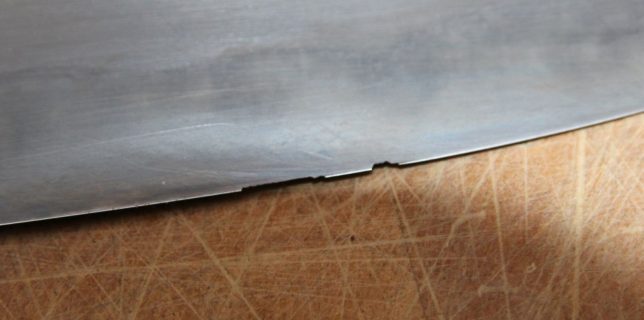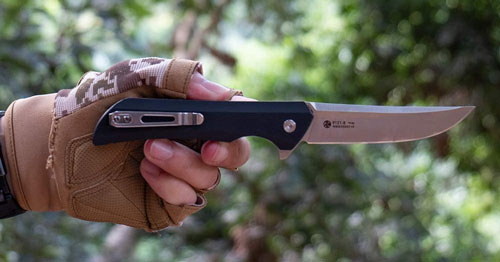Introduction of Knife Steel in the 21st Century
The knife steel is a vast, interesting but often confusing topic. As simple as it sounds to refine iron by adding other elements and thermodynamic processes. This topic proves complicated and exciting in practice.
The topic of knife steel is far from exhausted, new alloys are being tested. The production qualities increased and process technologies improved. 154CM, D2, and 440C are being replaced by Z-Wear, CPM-3V, and PSF27. While old acquaintances such as the M390 or SB1 can still hold their own. Pocket Knife blog highlights new developments and timeless classics.
Before we get started and knife steel discuss in detail, a few terms and definitions are essential. Many terms using colloquially. While the meaning of some terms has changed or they place in the wrong context. “Stainless steel” and “stainless steel” are two good examples. Both terms define and their meaning differs significantly from their colloquial use.
Stainless steel or quality steel?
There are only a few specified requirements for quality steel. For example with regard to toughness, formability, and suitability for welding. The proportions of the “steel pests” sulfur and phosphorus must not exceed 0.045 percent each. Quality steels are not suitable for hardening by heat treatment.
The requirements are more extensive for stainless steel. They are suitable for targeted heat treatment, i.e. they can harden. The purity of stainless steel is higher due to extra production steps. Which among other things serves to remove slag and other residues from production. The content of sulfur and phosphorus must not exceed 0.025 percent each.

With a few exceptions and historical weapons, knife steel will always be stainless steel. But not every stainless steel is suitable for the manufacture of knives. A (stainless) steel can be low- or high-alloyed. One speaks of high-alloyed steel when the proportion of an alloying element reaches or exceeds five percent.
The term “stainless steel” has nothing to do with precious metal, corrosion resistance, or immortality. Because low-alloy stainless steel can be rusted in no time at all…
Also, read about What Solar Generators Are Good For Outdoors?
Bladeable Steel
To turn iron into steel that can use for a blade, it must mix with suitable alloying elements. Carbon (C), which can be up to a maximum of 2.06% by mass in steel, is omnipresent because it is crucial. If the carbon content is higher, it calls cast iron. Recently, but, more and more blade steels have appeared with a carbon content of even three percent (ZDP-189↑, MC-66↑, Cowry-X↑).
The strength and hardenability of steel increase with carbon content up to a certain limit, while forge ability, weldability, machinability, and elongation properties decrease. Blade steels have 0.5 to 1.55 percent carbon; below that the steel would not be hardenable, and above that it becomes too brittle.
The abbreviations for the alloying elements mean:
C = carbon, Co = cobalt, Cr = chromium, Mn = manganese, Mo = molybdenum, Nb = niobium, Si silicon, V = vanadium, W = tungsten. Nb, i.e. niobium, occurs almost exclusively in a compound with tantalum, so correct one should always speak of niobium-tantalum (Nb-Ta). Still, the term “niobium” has become a comprehensible short form. The effects of different alloying elements on the properties of the steel explain in detail in the article ” Knife steel – a small compendium “.

Knife steel – stainless or rust-resistant?
These terms have also become blurred through colloquial use and above all through advertising texts. In fact, there is stainless steel, but they are only suitable for the construction of knives with very few exceptions. One of them is H1, an ANSI standard steel with a high chromium and nickel content.
Although the hardenability limit, even permanent contact with saltwater and oxygen does not allow H1 to corrode. It is so occasionally used for diving knives but otherwise does not play a major role in the best camping knife world.
Many knife sheets of steel are rust-resistant or, to put it technically, only slightly reactive.
In advertising, but, “stainless” sounds much more concise. Marketing strategists strained this term until it became established in everyday language. Rust-resistant steels have one thing in common: they have a high proportion of the element chromium.
This steel refiner improves corrosion inertia. Steels with a chromium content of 10.5 percent and more consider rust-resistant. Steels with a chromium content of 13.5 percent or more are only reactive and no longer corrode under normal environmental conditions. None of the terms “rust-resistant”, “lowly reactive” or “corrosion-resistant” define in a standard way, so they are always used.
Modern Knife Steel
There are three subgroups of steels austenitic steels, ferritic steels, and martensitic steels. On the technical side, the differences are due to different microstructures that result from the type and quantity of alloying elements and thermodynamic processes.
- Austenitic steels are non-magnetic, difficult to machine, easy to form, and have good weldability. They are relatively soft and not hardenable. Austenitic steel V4A (also: 18/10) is mostly mentioned in advertising for “stainless steel cooking pots”.
- Ferritic steels are magnetizable, difficult to machine, and suitable for welding. One of its most distinctive properties is its high-temperature strength, i.e. its ability to ensure structural stability even at high temperatures.
- Martensitic steels have the highest strength in the cold state, can harden, and magnetized, are easy to machine but are hardly suitable for welding. The martensite is created by the alloying elements during the heat treatment by converting the surface lattice structure of the steel into a tetragonal lattice.
Thank you, dear reader


